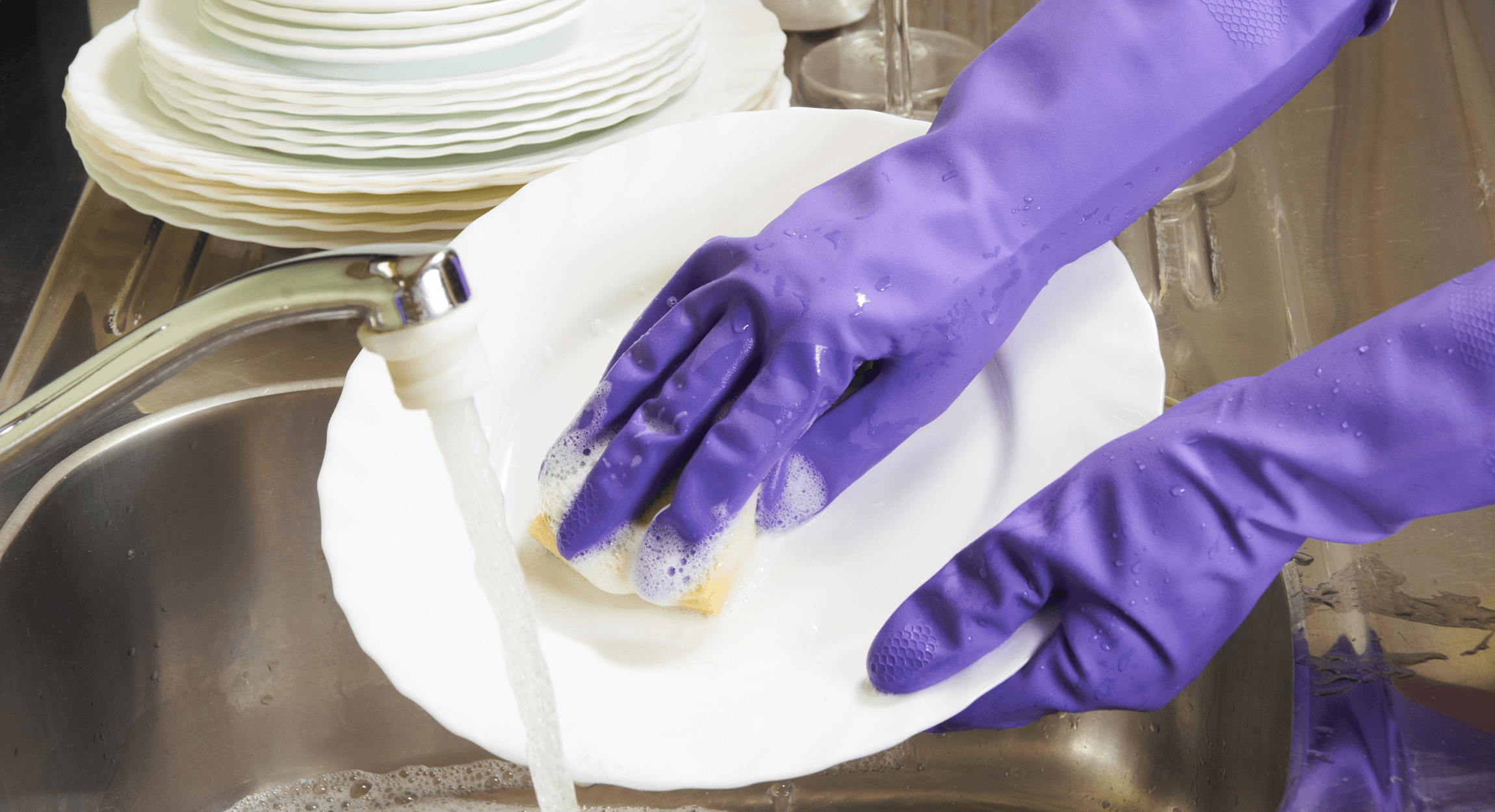Why isn’t my stuff getting clean?
We use water to clean our bodies, clothing, dishes, and much more. Water is often called the universal solvent, which means it is capable of dissolving more types of substances than just about anything else on earth. That’s what makes it a great cleaner. The downside, however, is that some of the substances dissolved in home tap water or well water can make it hard to clean your clothes, dishes, and even your hair. If you’re wondering why your t-shirts and teacups aren’t coming out sparkling clean, read on to find out how your water might be working against you.
Dingy, “Crunchy” Laundry
If your clothes are coming out with a gray or yellow tinge, soil buildup, or even a powdery residue, you may have hard water. Water hardness measures the mineral concentration of calcium and magnesium dissolved in the water. Harder water has a higher concentration of these minerals, which attach to the fibers in clothing and leave them stiff and dull-looking. Most of the ingredients of laundry detergent also bind to the calcium and magnesium, rather than your clothing, making the detergent less effective at cleaning. You can get cleaner laundry by using hotter water, adding Borax or other water softeners to the washer along with the detergent, or installing a water softener at the supply line. To treat white residue and mineral stains, soak in a solution of one cup white distilled vinegar to one gallon of water for 30 minutes. Rinse thoroughly, then launder with detergent and water softener.
Spotty Dishes, Windows, and Mirrors
What we call water spots that appear on dishes, windows, and mirrors should more accurately be called hard water spots. The same dissolved minerals that cause dingy, crunchy laundry also leave residue behind on hard surfaces when water evaporates from them. If your water is hard and your dishes are coming out of the dishwasher with spots, you may need to increase the temperature of the wash water or add more detergent. (But not too much, because that can cause spotting too!) To remove stubborn hard water spots, use a 50% vinegar-water solution, lemon juice, or try toothpaste.
Shampoo and Soap Residue After Showering
There’s nothing like a refreshing shower, right? Unfortunately, if you have hard water, your hair and skin may not get as clean as they could be. Similar to what happens with laundry, hard water minerals bind to the soap and surfactant particles in shampoo and body wash which can make them much less effective at cleaning. The minerals can also bind directly to your hair and skin. The result? Dull, lifeless hair, or dry, itchy skin. Hard water can also affect the results of hair dye products. You can install a shower head that filters out minerals, use special shampoo that binds to minerals and removes them from your hair and skin, or use apple cider vinegar to remove buildup from hard water.
Extra Suds in the Shower or Laundry
Soft water is, as you might guess, the opposite of hard water: it has a low concentration of dissolved mineral ions except for sodium. (Water softeners often work by replacing calcium and magnesium with sodium.) Soaps and detergents make more suds and work more effectively in soft water, but there can also be too much of a good thing. If you’re used to showering and cleaning with hard water, it’s easy to use too much soap or detergent at first, and all the extra suds can be hard to rinse off completely. Use less product and rinse thoroughly if you have soft water. Extra suds may be a minor nuisance in the shower, but they can overtax the drain pump of your washing machine and cause permanent damage, so make sure to pay attention to load levels and recommended detergent usage for your machine, especially if you have a high-efficiency (HE) washing machine.
Red Stains in the Toilet Bowl
Rust forms on metal as a result of an oxidation reaction, but you can also see rust-colored stains on porcelain toilet bowls and sinks, inside washing machine drums, and on clothing. The reaction that causes these stains is the same as the reaction that causes rust. Dissolved iron is colorless but turns red when it reacts with oxygen. Iron-hard water is more commonly found in wells than municipal water sources. You can clean the stains from tubs and toilets with commercial iron cleaners containing sodium hydrosulfite and/or metabisulfite, or for a more natural solution, you can try vinegar or lemon juice. No matter what, do not use bleach! Bleach is an oxidizer (ever heard of Oxi-Clean?) which will make iron stains even worse.
Blue-Green Stains or Scale Buildup
If you’ve ever noticed that old buildings often have green roofs, you’ve seen the reason for blue-green stains in the bathroom. Copper turns green when it reacts with other elements, especially in slightly acidic or low-pH environments. Copper isn’t naturally found in most water supplies, so any dissolved copper is likely to come from corroded copper plumbing. If you also have hard water, high copper levels can mix with other dissolved minerals to produce colorful scale buildup. High copper levels are not generally considered harmful, but you may notice a metallic or medicinal taste in addition to stains and scaling. Water softeners may be able to remove some of the copper, but the best prevention is to address the corrosion issue by raising the water pH or installing dielectric unions between copper and galvanized pipes.
Test your water to prevent cleaning problems before they happen.
It’s frustrating to get stains and spots when you are trying to clean. A water testing kit can provide quantitative evidence about what is in your water. There may be several different types of plumbing and fixtures throughout your home, so make sure you test the water from multiple sources. If you have questions about water testing, feel free to contact us any time!

